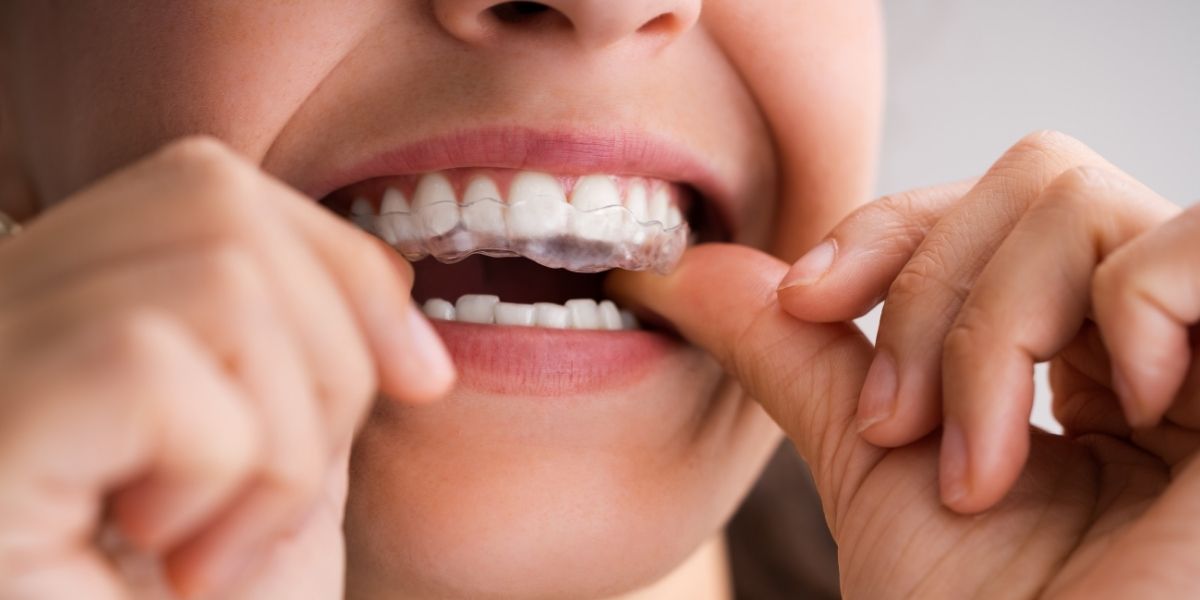Straightening your teeth with clear aligners is a popular and discreet way to achieve a healthier smile. But if you’re going to invest in aligner treatment, it’s important to follow the wear-time guidelines closely to see the results you want. While these trays may seem convenient and easy to manage, wearing them less than recommended can prolong treatment or compromise your progress.
One of the most common questions from new patients is, “How many hours a day should I wear my aligners?” It’s a valid concern, especially with busy schedules, meals, and social events to juggle. The answer is more specific than just “as much as possible.” Aligners work by applying consistent, gentle pressure on your teeth. Interrupting that pressure can cause teeth to shift unpredictably or slow down the process altogether.
If you’re working with a dentist in Manassas, VA, you’ve likely heard the magic number: 22 hours per day. But what does that look like in real life? And what happens if you fall short? Understanding the daily routine and how to build aligner wear into your lifestyle is key to successful treatment.
1. The 22-Hour Rule: Why It Matters
Clear aligners need to be worn for about 22 hours a day for them to be effective. That leaves roughly two hours to take them out for meals, brushing, and any other brief removal periods. The reason for this is consistency. Teeth move when pressure is applied over time. Removing aligners too frequently or for extended periods causes the teeth to relapse to their previous positions.
If you’re removing your trays often, you’re essentially resetting the progress. Even a few hours of missed wear per day can impact your overall timeline. That’s why orthodontists strongly encourage sticking to the 22-hour rule every day, without exception.
2. Eating and Drinking Guidelines
One benefit of aligners over traditional braces is that they can be removed during meals. However, every time you eat or drink something other than water, the trays need to come out. It’s tempting to leave them out while socializing or snacking, but those minutes add up.
For example, three 30-minute meals and two snack breaks can total over three hours if you’re not careful. To stay within the recommended window, aim to limit your eating sessions and place your aligners back in as soon as you’re done. Always brush before reinserting them to prevent plaque buildup or staining.
3. Sleeping with Aligners In
Wearing aligners overnight is not just encouraged, it’s necessary. Your teeth continue to shift during sleep, and aligners play a major role in maintaining that pressure through the night. Plus, wearing them while you sleep makes it easier to accumulate hours without interruption.
If you’re someone who grinds your teeth, aligners can also serve as a barrier that may reduce damage from clenching. Skipping aligners at night can lead to regression and discomfort when putting them back in the morning.
4. What Happens If You Don’t Wear Them Enough?
Falling short of the 22-hour guideline can cause multiple setbacks. Your teeth might feel sore when putting the trays back in, or the aligners might not fit properly due to movement reversal. This could mean restarting the current set of trays or even needing additional aligners, which extends your treatment plan.
In severe cases, inadequate wear time can affect how your bite aligns, resulting in less-than-ideal results that may require refinements.
5. Building Aligners into Your Routine
Consistency is easier when aligner wear becomes a habit. Set reminders on your phone, keep your case handy at all times, and brush immediately after meals so you can pop them back in right away.
Some patients find it helpful to set a timer when they take their aligners out to ensure they don’t exceed the 2-hour daily limit. Others track their wear time using apps specifically designed for aligner users. Small habits like these can make a big difference in staying on track.
6. When to Contact Your Dentist
If you lose a tray, experience discomfort, or notice your aligners aren’t fitting as expected, don’t wait to bring it up. Your dental team can evaluate whether adjustments are needed or if you should move to the next set of trays. Staying in communication ensures your treatment stays efficient and effective.
It’s also wise to bring your aligners to every dental appointment so your dentist can check their fit and progress. Skipping this step could mean missing issues that might delay your final results.
Clear aligners offer a flexible, discreet path to straighter teeth but the key to success lies in consistent wear. Aim for 22 hours a day, every day, to keep your progress on track. Whether you’re at work, eating out, or sleeping, making aligners part of your daily habits is essential to completing your treatment as planned.
For trusted care and expert aligner treatment from a dentist in Manassas, VA, contact Galleria Dental Arts. Our team is here to help you stay on schedule and achieve the results you’re aiming for comfortably and confidently.





